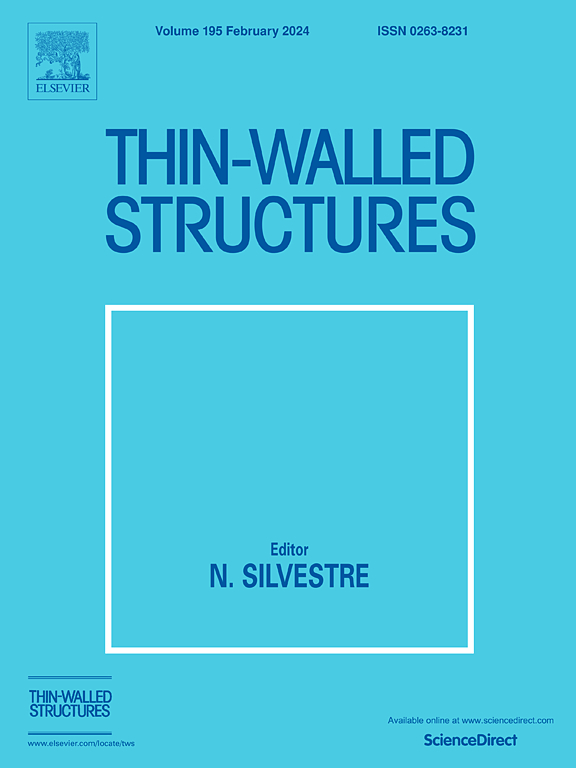The confluence of photostriction, electrostriction, and aerodynamics: A flutter study of perovskite skew plates
IF 5.7
1区 工程技术
Q1 ENGINEERING, CIVIL
引用次数: 0
Abstract
This study investigates the interaction of static and dynamic stabilities of perovskite skew plates, subject to simultaneous photostriction, electrostriction, and supersonic airflow effects. Such smart materials find significant applications in engineering fields. The analysis considers the temperature rise induced by photon absorption within the plate. The displacement field is formulated using the first-order shear deformation theory. A linear opto-electro-thermoelastic model is employed to integrate the effects of photostriction, thermal expansion, inverse piezoelectricity and electrostriction into the mechanical response. A suitable mapping from the orthogonal to the skew coordinate system is employed to enhance the analysis of these plates. Immovable boundary conditions are specifically chosen to study the static bifurcation buckling plates under these circumstances. The aerodynamic pressures generated by supersonic airflow, are simulated using quasi-steady linear piston theory. Motion equations are solved using the energy-based Ritz method founded on the Chebyshev polynomial functions. Critical aerodynamic conditions and flutter phenomena are determined through damping and frequency characteristics. The vibrational mode configurations of the plates prior to and following the onset of flutter, under skew angles, are examined. The results emphasize stability margins, differentiating stable operation, from dynamic instability due to airflow, and static buckling induced by photoelectric effects.
求助全文
约1分钟内获得全文
求助全文
来源期刊

Thin-Walled Structures
工程技术-工程:土木
CiteScore
9.60
自引率
20.30%
发文量
801
审稿时长
66 days
期刊介绍:
Thin-walled structures comprises an important and growing proportion of engineering construction with areas of application becoming increasingly diverse, ranging from aircraft, bridges, ships and oil rigs to storage vessels, industrial buildings and warehouses.
Many factors, including cost and weight economy, new materials and processes and the growth of powerful methods of analysis have contributed to this growth, and led to the need for a journal which concentrates specifically on structures in which problems arise due to the thinness of the walls. This field includes cold– formed sections, plate and shell structures, reinforced plastics structures and aluminium structures, and is of importance in many branches of engineering.
The primary criterion for consideration of papers in Thin–Walled Structures is that they must be concerned with thin–walled structures or the basic problems inherent in thin–walled structures. Provided this criterion is satisfied no restriction is placed on the type of construction, material or field of application. Papers on theory, experiment, design, etc., are published and it is expected that many papers will contain aspects of all three.
 求助内容:
求助内容: 应助结果提醒方式:
应助结果提醒方式:


